Strengthening the social sector as a way to improve public engagement
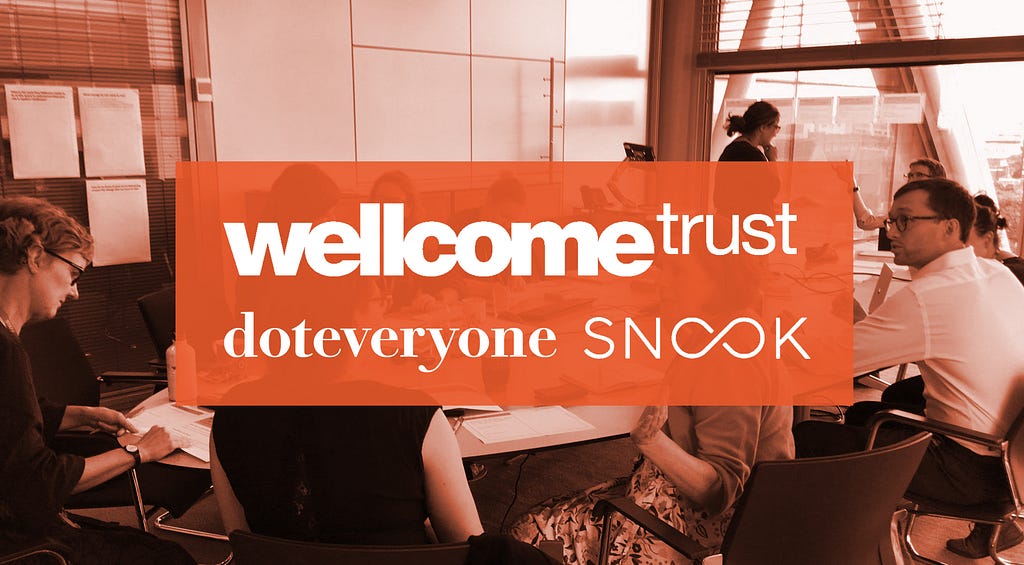
Wellcome Trust recently set out a new strategy for public engagement. Doteveryone, in partnership with Snook, came into work with the Wellcome Public Engagement team to explore different ways they could deliver on their strategic aims.
Wellcome’s ambitions state:
We want people to be empowered, so that more people can access, use, respond to and create health research and innovation.
We want to see more people-centred health research, which means better understanding people’s experiences of science and health so that Wellcome and our partners can make better decisions.
We want society to value Wellcome’s work, so we need to ensure the research and innovation we fund is trustworthy and valued by people, whether or not we work with them.
The team wanted to explore what would be the most effective levers for change to increase public engagement with health research. This required taking a step back from immediate and obvious challenges, taking a systemic view, and looking at potential effects happening elsewhere in the system.
Taking this view, and looking at the macro factors that might impact how the public can and will engage with health research, Wellcome recognised that in order to influence change, it’s important for them to work upstream as well.
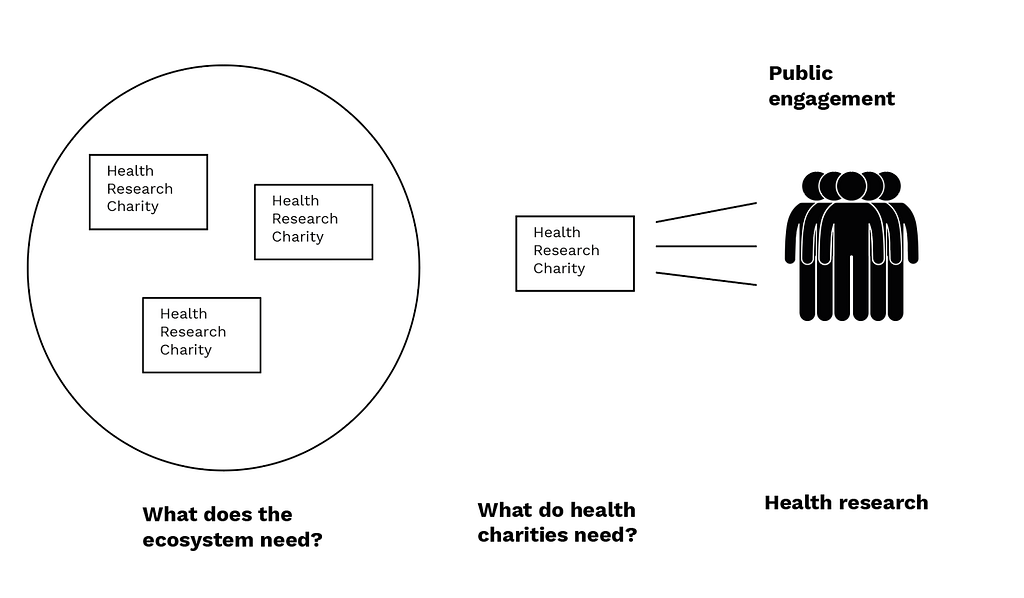
Why is Wellcome asking this question?
The theory goes something like this — if the ultimate goal of the team is to improve how the public engages with health research and takes more of a role in shaping it, then health charities themselves need to be:
a) good at doing public engagement
b) well resourced enough to do it and make use of it.
For health charities to be in this position then the whole charity ecosystem needs to be thriving and resilient. And if it isn’t (and we all know the struggles the social sector is going through), then is this where Wellcome should start?
What are the needs?
To start exploring what role funders like Wellcome might play to enable change in the ecosystem, we interviewed a range of health charities and other stakeholders in the social sector to test their views.
Along with gathering opinion, we also put prototypes in front of people so we could see people’s reactions and give them something to respond to. We will introduce the prototypes in the following two blog posts.
Through these interviews, we were able to better understand the challenges individual charities are facing as well as the sector-wide challenges in relation to health research and public engagement.
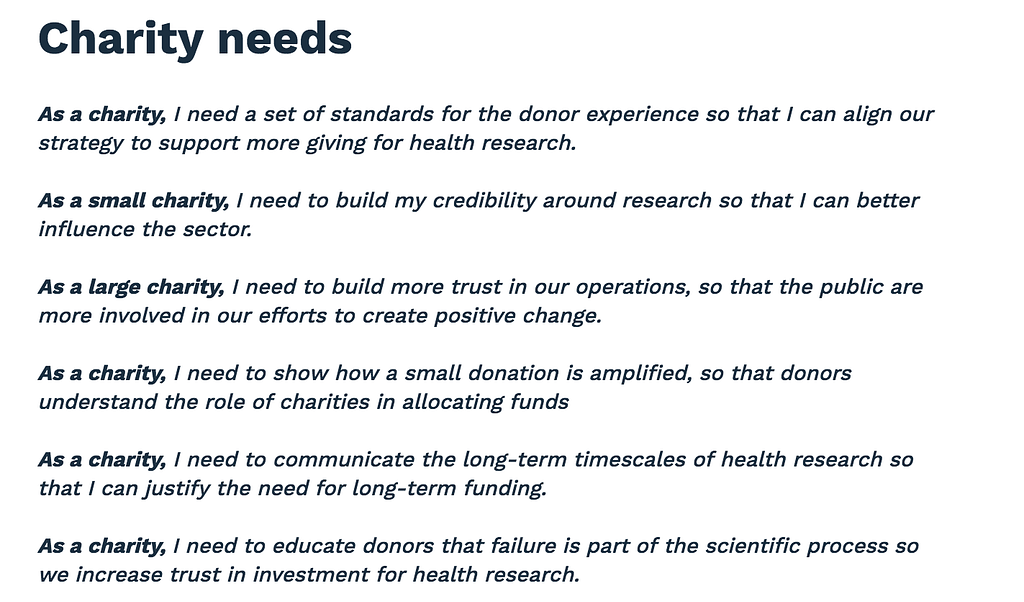
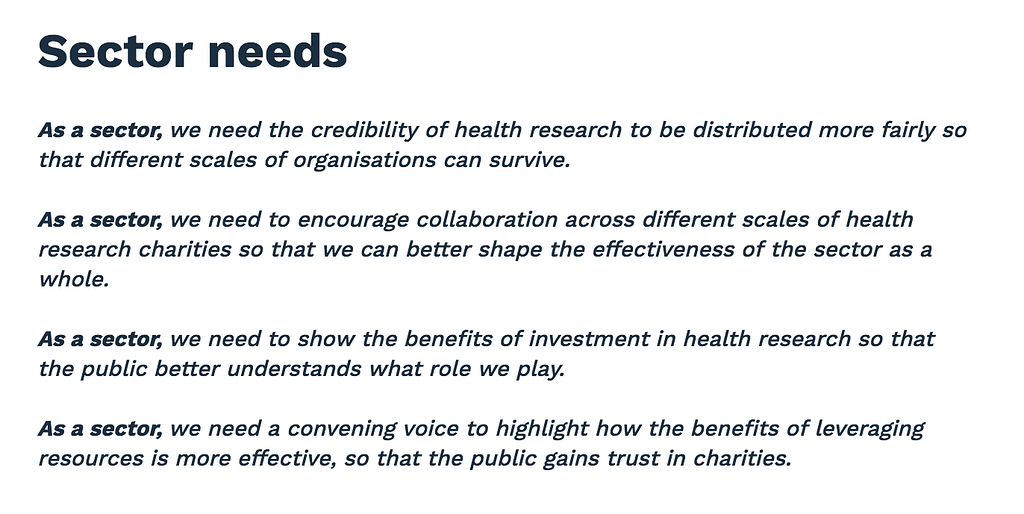
Where do we go from here?
Bringing together the sector needs that we identified and other ideas that interviewees expressed, we came up with a list of things Wellcome could do to strengthen the social sector as a whole. These included:
- Enabling more joint procurement and collaboration to diversify income streams
- Sharing practice and learning more effectively
- Encouraging more collaborative attitudes and behaviours
- Helping renew the social sector’s mission in a digital world
- Creating ways to change how people feel and behave towards charities
- Helping rebuild trust in charities with society at large
- Campaigning or creating content that helps people know the role and value of the social sector
- Helping the sector come together to increase engagement with charities and the social sector
Starting to fund upstream and taking a more systemic approach to funding also opens up questions about the role an organisation like Wellcome might play. To help with this we developed some criteria as part of the work.
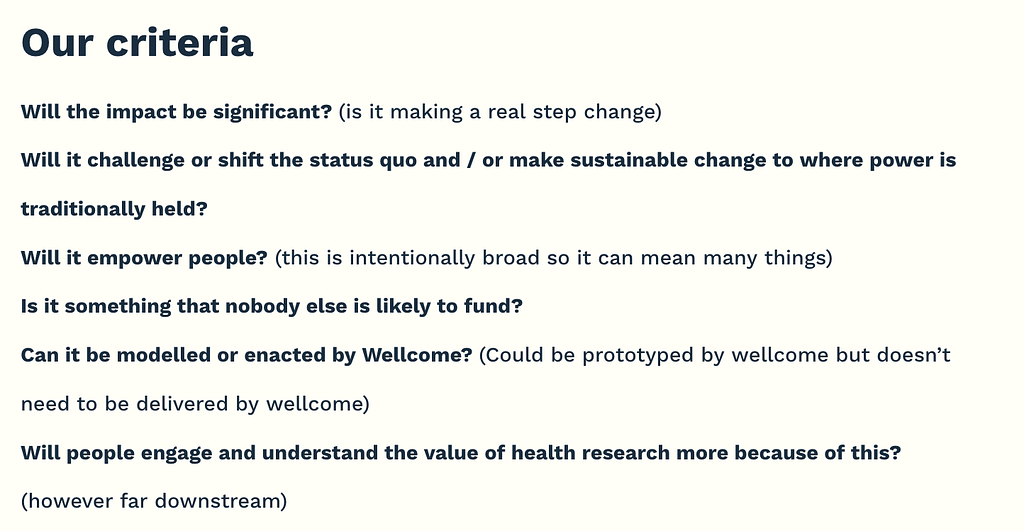
The team is now exploring how to take this exploratory work forward, with an eye on these criteria related to their role and investment.
The following two blog posts will talk about two initial ideas that came out of this project:
- Charity As Platform is a community stack, which would involve a sector-wide investment.
- Citizen Research Centre which is truly disrupting power and putting it in the hands of people.
Strengthening the social sector as a way to improve public engagement was originally published in Doteveryone on Medium, where people are continuing the conversation by highlighting and responding to this story.